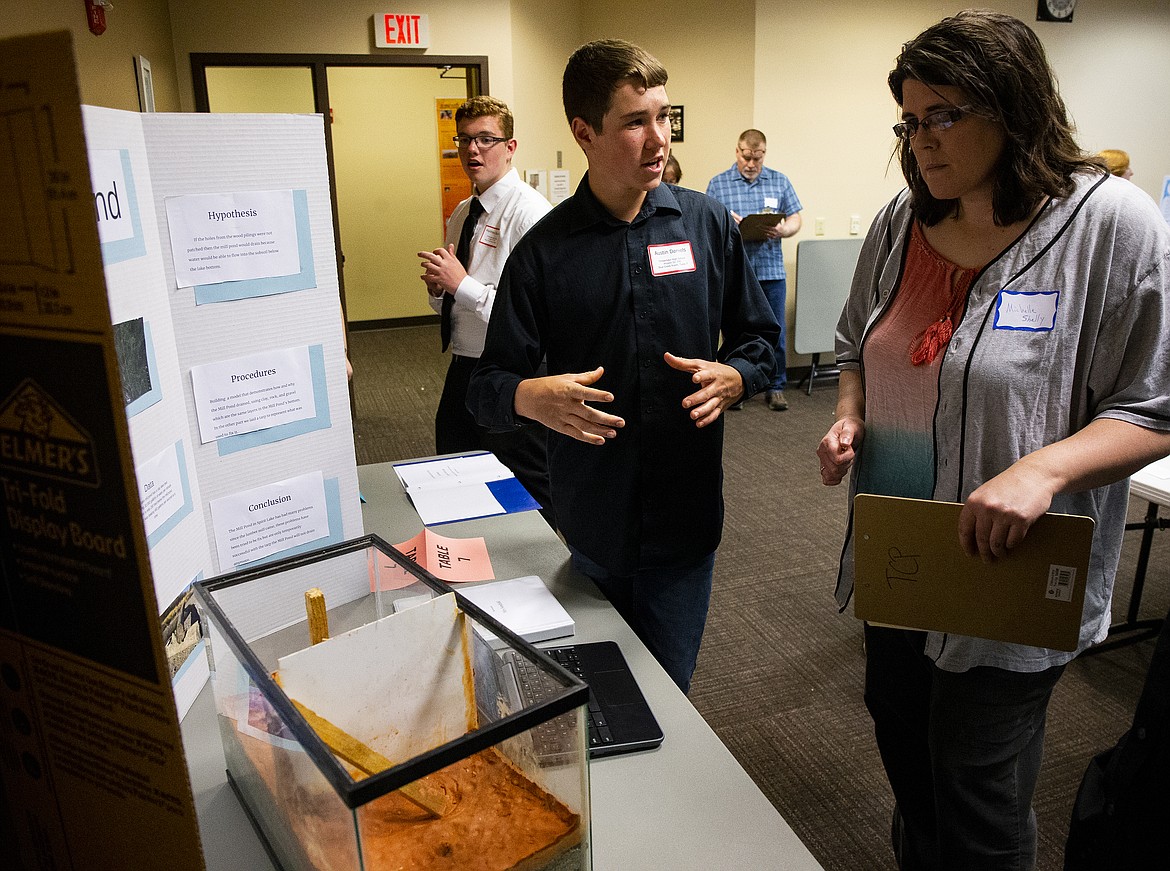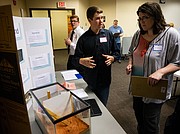Investigating North Idaho's watershed
COEUR d’ALENE — The death of a family pet motivated a team of local high school students to scientifically investigate what happened.
"The other girl in our group, her dog actually died from pythiosis last year, so we thought we’d look more into it,” said Post Falls High School sophomore Katie Fleming. "By their garbage cans they had a lot of buildup of water and the dog drank from it."
Katie stood by her team's exhibit Tuesday during the Youth Water Summit in North Idaho College's Edminster Student Union Building. The display featured interesting facts about her team's research as well as samples of water that pets shouldn't drink.
She explained that pythiosis is a disease caused by the pathogen phythium insidiosum, found in stagnant water and sometimes soil. Pythiosis, which is more common in warmer climates, can be deadly to dogs and make larger creatures sick or cause lesions to the skin.
“There are diseases out there that we’re not sure about, but also, they’re very hard to cure," Katie said. "This one’s hard to detect, and by the time you detect it, it’s hard to save the animal.
"We learned about the problems and the solutions," she continued. "The problem is the drainage systems get clogged a lot by leaves and trees grow into them and break the pipes, and we had no idea that that was a huge issue."
A solution, she said, is permeable paving, a special type of pavement that allows water to soak into the ground rather than accumulate on top and create stagnant pools.
More than 350 students from seven area high schools presented their research findings during the second Youth Water Summit in Coeur d'Alene. They spent the school year working with industry professionals and in the field testing water, measuring snowpack and exploring other environmental issues that affect North Idaho as part of the Confluence Project.
“It’s so fun, especially with the outdoor studies program. That’s a good program for everybody to have,” said Lake City High School junior Alexandra Leon, whose project included a computer game that provides awareness about non-environmentally-friendly features of communities. "You get dirty, you go on a lot of field trips and you learn more than you do when you’re in the class."
Timberlake freshmen James Setters and Thomas Northrup and sophomore Wyatt Rollins spent their project making an informational video for students about how to properly conduct water testing. Their demonstration location was the creek in Rathdrum City Park.
“We made it to simplify it for kids in the future so they know what to do and how to do it,” Wyatt said. "It has biological, chemical and the physical assessments for all of water quality testing so kids know what to do."
"We got to go out and go to a creek with all the testing on the weekend and film," James said. "It was pretty fun."
All three agreed they learned more about water testing than they ever would have if they hadn't participated in Confluence Project.
“It was interesting to learn about the water near us and the different properties about it, like how much phosphates it has and how oxygenated it is," Thomas said. "Basically, how healthy it is."
Other projects included an examination of storm water pollution in the Northwest, stream bank erosion, boat and oil pollution, America's perception of water quality, invasive species and the effectiveness of rain gardens.
"Some of them have amazing solutions to problems we see every day," said Sharon Bosley, executive director of Kootenai Environmental Alliance. "It shows how innovative the young people in our community can be, and how much they care. It’s pretty cool."



